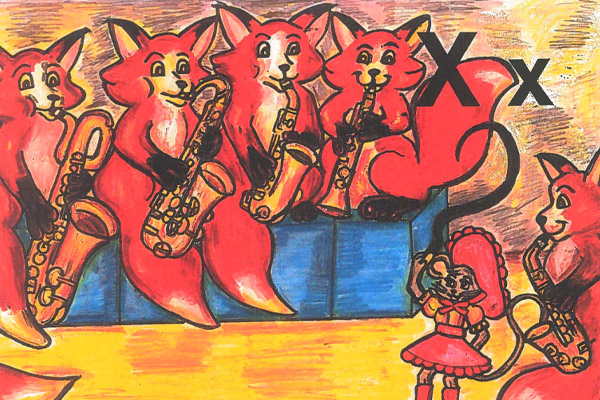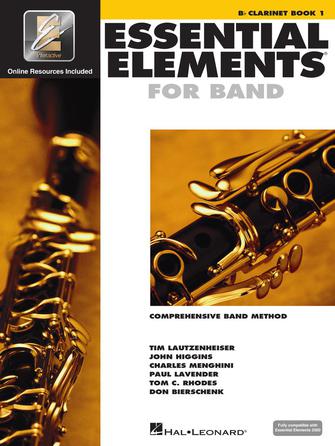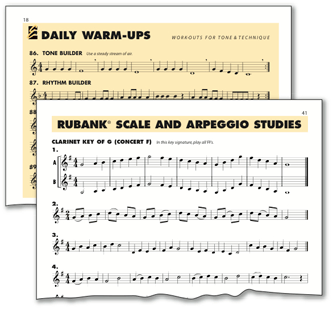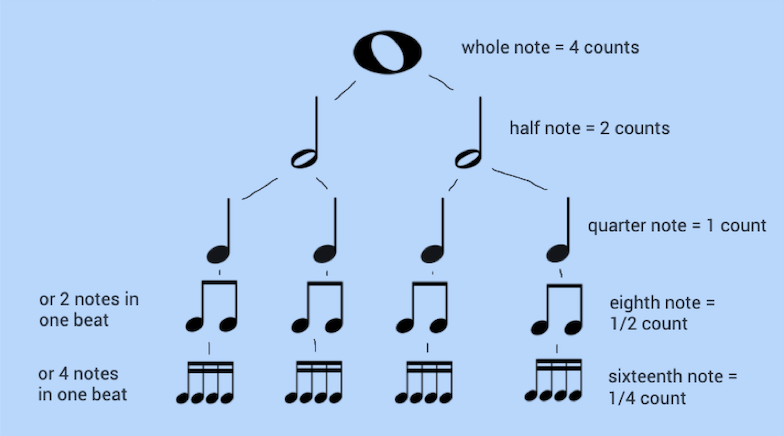Your cart is currently empty!

Director: Band/Music: Mr. Ferman



Band Week: Thirty-Six and Thirty-Seven
Music Week: Thirty-Six and Thirty-Seven
Band Week: Twenty-Two and Twenty-Three:

New Band Hours for 2023-2024
Monday thru Friday 7:45 to 8:35 Monday and Tuesday 3:30-4:15
We have increase the programs available for students.
- Monday:
• 3:30-4:15 – Advance Orchestra class- String and Band
- Violin, Viola, Cello / Band Instruments
- Tuesday:
• 3:30-4:15 – Advance Orchestra class - Wednesday:
• 2:30-3:00 Choir – 1-2nd
• 3:00-3:30 Choir – 3-6th
• 3:30-4:30 Mariachi Band
• 5:00-5:55 Scout (Not part of Free Arts Program) - Thursday:
• 2:30-3:00 Choir – 1-2nd
• 3:00-2:30 Choir – 3-6th
• 3:30-4:30 Mariachi Band - Friday:
• 3:30-4:30 Robotics, Lego Design (Not part of Free Arts Program)
Concert:
May 02, 2024: Opera by Students
Practice singing Fifty Nifty:
March 22, 2024: Opera by Students
- Learn the words:
Tahuwai la a tahuwai wai la
Ehu hene la a pili koo lua la
Pututui lu a ite toe la
Hanu lipo ita paalai
Tahuwai la a tahuwai wai la
Ehu hene la a pili koo lua la
Pututui lu a ite toe la
Hanu lipo ita paalai
Au we ta huala
Au we ta huala
Lesson:
Week: 26:
Objectives and Goals:
Students will be able to sing an entire song with a piano accompaniment.
Student will be able to understand musical concept of round.
Student will learn about the five basic kinds of mountains:
Fold Mountains (Folded Mountains)
Fault-block Mountains (Block Mountains)
Dome Mountains
Volcanic Mountains
Plateau Mountains
Arizona Academic Standards in the Arts:
Anchor Standard # 4: Select, analyze, and interpret artistic work for performance.
MU.PR.4.1c With appropriate guidance, read and perform rhythmic and melodic patterns using notation (e.g., traditional notation).
Vocabulary:
NCCAS:
Beat-Underlying steady pulse present in most music
Form-Element of music describing the overall organization of a piece of music, such as AB, ABA, rondo, theme and variations, and strophic form
Musical idea-Idea expressed in music, which can range in length from the smallest meaningful level (motive or short pattern) through a phrase, a section, or an entire piece Rhythm-Duration or length of sounds and silences that occur in music; organization of sounds and silences in time
Materials:
• Piano
• Chalkboard/chalk
• Five images of Mountains
Teaching Procedures (estimated total time: 10 minutes)
- Introduction: Welcome the class. “Today we are going to learn a song about a vacation spot”. Ask where a few favorite vacation spots are. Tell the class that their answers are all great places and that my favorite place to go on vacation is the mountains. Ask “Who else likes the mountains?” Explain that today we are going to learn a song called “I Love the Mountains”.
- Ask children to listen for how many times they hear the word “I” (5 times) at the beginning of a sentence in the song. Sing the song for the children and restate question. Praise correct answer or repeat song again for incorrect answers.
- Talk about the different types of Mountains.
- Next, tell children to show the melody using their hand. Moving the hand up means a higher pitch, while moving the hand down is a lower pitch. Model and have them try. Applaud students if they do well. Try again if students don’t get it quite right the first time.
- If they did very well, we will learn sign language to a few words. Write words on the board. Teach the sign language for the words “mountains”, “flowers”, “fireside”, and “lights”. Sing the song and do the motions as a class, while still modeling. Congratulate the students if they do well. If they aren’t getting it, teach the sign language again.
- Now, the students can “Be my echo”! Sing the song phrase by phrase, giving starting pitch singing “ready” each time. Praise students.
- “Now we are going to put all of the song together!”. Have the students then sing the full song by themselves. Commend children if they do a good job. Repeat process if they need work.
- Sing the song one last time with piano accompaniment for reinforcement. Start class off then drop out to ensure they can do it alone. Tell the class that they did a wonderful job. Next time they will get to learn this song as a round and with an ostinato!
Week: 25:
Objectives and Goals:
Students will learn the traditional folk song De Colores. The Spanish lyrics will give non- Spanish speakers the opportunity to sing in another language. Instrumental students can learn the parts and play along with the BPO video recording. Students will understand the importance of folk songs in preserving and passing on cultural stories, values and traditions.
Arizona Academic Standards in the Arts:
MU.PR.4.1b and MU.PR.4.3b:With appropriate guidance, demonstrate knowledge of musical concepts in music from a variety of cultures selected for performance (e.g. beat and melodic contour)./Demonstrate knowledge of musical concepts in music from a variety of cultures selected for performance (e.g. meter and tonality).
MU.PR.6.3a: a. Perform music with appropriate expression and technique (e.g. posture, tone, and breath support).
- Video of De Colores performed by the Buffalo Philharmonic Orchestra and vocalist Alejandro Gómez
- Lyrics and music for De Colores (provided)
- Optional: Music parts for instrumental students (provided)
Week: 24:
Objectives and Goals:
When rehearsing the new music, “Rock’n Robin” arranged by Albert Davis, students will be able to perform the contrasting sections with accurate balance and blend.
Students will specifically be able to improve upon their balance and blend by working on active listening, building awareness, and engaging basic theoretical knowledge.
Arizona Academic Standards in the Arts:
MU.CR.1.4a and MU.CR.1.6a: Improvise rhythmic, melodic, and harmonic ideas within a specified form (e.g. AB, ABA, rondo, theme and variations, etc).
MU.CR.1.3a: Improvise rhythmic and melodic ideas (e.g. beat, meter, and rhythm).
Materials needed:
Music parts for “Rock’n Robin”, teacher-developed warmup exercise, music stands and chairs
Warmup and Introduction:
Starting with Rubank Scales to get students Embouchure warmed up, we will review moving by step and moving through arpeggios. Using the teaching developed “Chorale Warmup for Band”, the students will play the chorale. The teacher will ask questions throughout such as what pitch of the chord do you have? Who has moving notes here?
Instructional Sequence: (Procedure)
- Introduce the song De Colores with some background information about its origins: De Colores is a well-known Spanish folk song that means “Of Colors.” The lyrics are an expression of happiness and celebration that our world is full of so many colors.
- Briefly discuss with students: What is a folk song and why are they important? Some points to include:
- 1. Folk songs are passed down from one generation to the next, usually without any sort of notation. This is called an “oral tradition,” meaning that we pass something along by saying or telling it, or in this case, singing it. Often times, there are no written records of the original versions of folk songs or folk tales.
- 2.
- If you have ever played a game of “gossip,” you understand how things change as they get passed along without being written down. Many folk songs we sing today have nonsense words in them or they seem very silly. This could
be because words were changed along the way because people misunderstood what they heard. - 3. Many folk songs have been around for a long time and no one is sure who originally composed them.
- Using the lyrics, music and recording as needed, teach the students the
song, De Colores. Depending on your available time, you may want to just focus on the chorus:
De colores
De colores, de colores
Se visten los campos en la primavera.
De colores, de colores
Son los pajaritos que vienen de afuera.
De colores, de colores
Es el arco iris que vemos lucir.

Week: 24:
Objectives and Goals:
Lesson:
Week: 24: Songs About America
Objectives and Goals:
Primary Musical Concept to be addressed:
Expressive Elements / Articulations: Staccato/Legato, and Dynamics
Students will specifically be able to improve upon their balance and blend by working on active listening, building awareness, and engaging basic theoretical knowledge.
Behavioral objectives addressed in the lesson, relevant to the concept:
- 1.The students will sing the correct text, pitches, and rhythms of the songs after teacher model to an acceptable standard.
- 2.Students will label these expressive elements as articulations: staccato, legato, and dynamics (Loud, soft, getting louder, getting softer) and identify them in the score to teacher satisfaction.
- 3.Students will demonstrate their understanding of expressive elements by adding articulations to a score of Jingle Bells and performing their composition to an acceptable standard.
- Assessment ideas: This will be assessed through performance
Arizona Academic Standards in the Arts:
MU.CR.1.4a and MU.CR.1.6a: Improvise rhythmic, melodic, and harmonic ideas within a specified form (e.g. AB, ABA, rondo, theme and variations, etc).
MU.CR.1.3a: Improvise rhythmic and melodic ideas (e.g. beat, meter, and rhythm).
Materials needed:
Music, Piano, CD, Computer, Video, Lyrics, music stands and chairs
Warmup and Introduction:
Starting with Rubank Scales to get students Embouchure warmed up, we will review moving by step and moving through arpeggios. Using the teaching developed “Chorale Warmup for Band”, the students will play the chorale. The teacher will ask questions throughout such as what pitch of the chord do you have? Who has moving notes here?
Instructional Sequence: (Procedure)
- 1. Who has heard the song Yankee Doodle Dandy? Let me sing it for you. Does anyone have any ideas what the song is about?
It was written during the Revolutionary War, the macaroni is a feather and by putting a feather in his hat he was proclaiming himself a gentleman.
Today we will be learning a song for our Choral Program. There is one section in the music that is very different from all the rest. Listen to me sing the song for you and see if you can identify what is different. - 2. Students will be able to identify expressive elements within a piece of music both visually and aurally, and perform said elements.
Band
- Year:2024-Week 26 (Jan 29)
- Year:2024-Week 25 (Jan 22)
- Year:2024-Week 24 (Jan 15)
- Year:2024-Week 23 (Jan 08)
- Year:2024-Week 22 (Jan 01)
- Year: 2023-Week 23: Band
- Year: 2023-Week 23: Music
- Year: 2023-Week 22: Band
- Year: 2023-Week 22: Music
- Year: 2023-Week 21: Band
- Year: 2023-Week 21: Music
- Year: 2023-Week 20: Band
- Year: 2023-Week 20: Music
- Year: 2023-Week 19: Band
- Year: 2023-Week 19: Music
- Year: 2023-Week 18: Band
- Year: 2023-Week 18: Music
- Year: 2023-Week 05: Band
- Year: 2023-Week 05: Music
- Year: 2023-Week 04: Band
- Year: 2023-Week 04: Music
- Year: 2023-Week 03: Band
- Year: 2023-Week 03: Music
- Year: 2023-Week 02: Band
- Year: 2023-Week 02: Music

⭐ “Think and Wonder, Wonder and Think”
~ Dr. Seuss
We use Essential Elements for Band Books. They offers students sound pedagogy and engaging music, all carefully paced to successfully start young players on their musical journey. EE features familiar songs and specially designed exercises, created and arranged for the classroom in a unison-learning environment, as well as instrument-specific exercises to focus each student on the unique characteristics of their own instrument.
EE provides the students with a wealth of materials to develop total musicianship.

Find music to practice to:
https://www.halleonard.com/ee2000Band.jsp
Please practice:
Jazz Band, Please practice:
55 Saints Go Marching In
58 Hard Rock Blues
Blue Train
Girl from Ipanema
Variations on a Familiar Theme
106 March Militaire
152 School Spirit
Jazz band: More Here
Each book includes:
- Start-up Video
- Play-along mp3
- Duets and Trios
- Music Listening Library
- SmartMusic
exercises 1-100
- SmartMusic
- Download / Stream at www.myeelibrary.com.
Daily Warm-ups included in each book.
Page 40 and 41.

This is by far one of the most efficient way to meet the National Standards and State Standards, integrate other subjects into the music curriculum (like history), and still teach the essentials of music performance.
Trumpet: LINK
Instruments – Youth Arts Engagement Program – Arizona Commission on the Arts.
These classes are after school, free, and open to other students in the community.
- Instruments – Youth Arts Engagement Program – Arizona Commission on the Arts.
- These classes are after school, free, and open to other students in the community.
- Monday:
- Advanced Orchestra – Must be at least a second year student
- 3:30-4:15 pm
- Tuesday:
- Advanced Orchestra
- 3:30-4:15 pm
- Garage Band – Write and Record
- 4:30-5:30 pm
- Wednesday:
- Beginning Orchestra through Mariachi Music
- 3:30-4:30 pm
- Choir: 3-6th Grade
- 3:00-3:30 pm
- Scouts – (Not Part of Arts Program)
- 5:00-5:55 pm
- Thursday:
- Choir: 3-6th Grade
- 3:00-3:30 pm
- Beginning Orchestra through Mariachi Music
- 3:30-4:30 pm
- Friday:
- Robotics-Lego Design-(Not Part of Arts Program)
- 3:30-4:30 pm
USA Show
Music we are working on:
🎼 Fifty Nifty:
Classes singing: Kinder, 1st, 2nd, 3rd, 4th, 5th, and 6th
🎧 Music / 🎶 PDF / 🎬 Video
🎼 Chester:
Classes singing: 1st, 2nd, – 5th, and 6th
🎧 Music / 🎶 PDF / 🎬 Video
🎼 Hawaiian War Chant:
Classes singing: 1st, 2nd, – 5th, and 6th
🎧 Music / 🎶 PDF / 🎬 Video
Grammar Show
Music were are working on:
🎼 On With the Show: Classes singing: 3rd, 4th, 5th, and 6th
🎧 Music / 🎶 PDF / 🎬 Video
🎼 Conjunction:
🎧 Music / 🎶 PDF / 🎬 Video
🎼 Proper Noun:
🎧 Music / 🎶 PDF / 🎬 Video
🎼 Pronoun:
🎧 Music / 🎶 PDF / 🎬 Video
🎼 Adjective:
🎧 Music / 🎶 PDF / 🎬 Video
🎼 Verb:
🎧 Music / 🎶 PDF / 🎬 Video
🎼 Adverb:
🎧 Music / 🎶 PDF / 🎬 Video
🎼 Interjection:
🎧 Music / 🎶 PDF / 🎬 Video
🎼 On With The Show-(Reprise):
🎧 Music / 🎶 PDF / 🎬 Video
END YEAR SHOW: America’s States and More
Video:
After April 01st only practice with Link above OR CD ↑
De Colores: LINK
Fifty Nifty United States: LINK

Other Electives:
Band / Instruments
- Grade 3-6:
- M-W
- 8-8:45 am
- Jazz & Pop:
- Th
- 8-8:45 am
- Music: Instruments
- Grade 3 Tuesday:
- 9-9:45am
- Grade 4 Tuesday:
- 10-10:45am
- Grade 3 Tuesday
- 10:45-11:30am
- Grade 3 Tuesday:
Choirs: After lunch
Music / Kodály:
- Kindergarten:
- Monday
- Tuesday
- Grade 1:
- Monday
- Wednesday
- Grade 2:
- Tuesday
- Wednesday
- Grade 3:
- Thursday
- Grade 4:
- Thursday
- Grade 5-6:
- Thursday
Visual Arts: Wednesday
- Kindergarten:
- Wednesday
- Grade 1:
- Wednesday
- Grade 2:
- Wednesday
- Grade 3:
- Wednesday
- Grade 4:
- Wednesday
- Grade 5-6:
- Wednesday
Physical Education:
- Kindergarten: Monday
- Grade 1: Monday
- Grade 2: Monday
- Grade 3: Monday
- Grade 4: Monday
- Grade 5-6: Monday
- Basketball: M-W
Link to Instrument Inventory 2023



